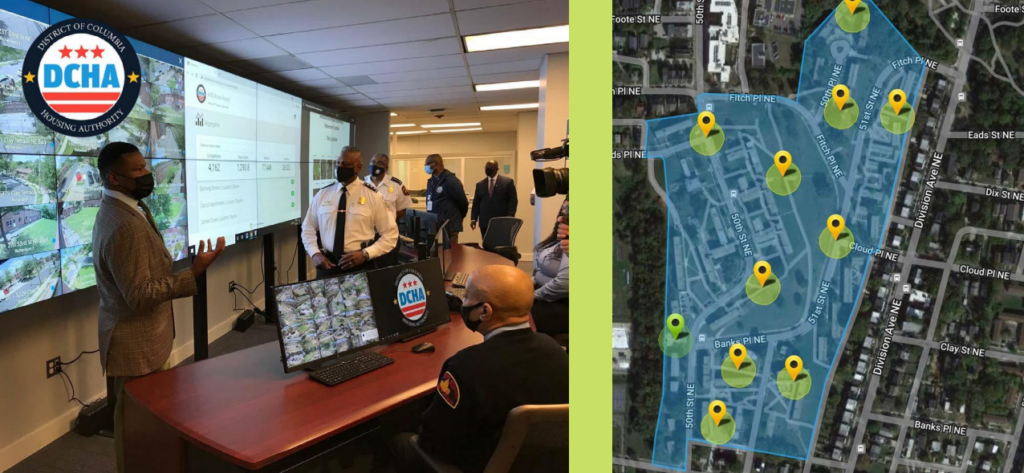Introduction
In an age of growing anxiety over crime in our communities and a reduction in policing resources, this case study examines how Verbosity’s Automated Workforce Deployment (AWD) system, combining its patrol feature with AWD SmartTags, aligns with the principles of the Koper Curve, a theoretical framework in community policing. AWD patrols utilize unordered patrol checkpoints, officer presence validation, and patrol time measurement. AWD SmartTags empower officers and citizens to report non-emergency issues impacting crime. Together, they demonstrably reduce crime and foster community engagement, aligning perfectly with the Koper Curve’s goals.
The Koper Curve and Community Policing
The Koper Curve, developed by criminologist Stephen Koper, suggests an inverse relationship between crime rates and the level of citizen contact with police. When police prioritize proactive community engagement over solely reactive enforcement, fear of apprehension increases among potential criminals, leading to a decrease in crime.
Verbosity AWD: Patrols and SmartTags Working Together
Verbosity’s AWD system offers a comprehensive approach that strengthens the Koper Curve’s impact:
- Increased Visibility and Unpredictability: Unordered AWD patrols maintain an element of surprise for criminals. AWD SmartTags empower citizens to report issues like graffiti or abandoned property misuse, creating additional unpredictable points of police presence. This combined approach multiplies deterrence.
- Enhanced Officer Presence and Citizen Contact: AWD patrols ensure a measurable police footprint. AWD SmartTags allow for real-time issue reporting, prompting officer response to community concerns. This two- pronged approach maximizes citizen contact, both planned and responsive.
- Community Engagement through Problem-Solving: AWD SmartTags empower residents to be active partners in safety. Reporting issues like litter or blight fosters a sense of community ownership and collaboration with police in addressing neighborhood concerns. This builds trust and strengthens police- communityrelations.
Impact On Crime Rates and Community Engagement
Verbosity’s DCHA case study cited a significant drop in violent crime within 10 DC communities over 4 years following AWD implementation. By adding AWD SmartTags to directly address potential crime precursors like abandoned properties, residents are empowered to maintain a safer environment.
Furthermore, the study highlighted enhanced community engagement. AWD SmartTags provide a direct channel for residents to voice concerns and collaborate with police in problem-solving. This fosters a sense of shared responsibility for community safety.
Conclusion
Verbosity’s AWD system, combining patrols and SmartTags, offers a compelling case study for leveraging technology to strengthen community policing practices aligned with the Koper Curve. The system’s design increases police visibility, empowers citizen reporting, and fosters collaboration on community issues, resulting in demonstrably safer communities and a more engaged citizenry. The system is designing to scale, as it encourages multi-agencies to onboard as responders to varies reported social issues, like homelessness, drug addiction, and truancy. The data collected from AWD SmartTags and Patrols will allow for stronger data-driven decision-making in terms of policies and budgets. As community policing continues to evolve, AWD serves as a promising model for achieving significant crime reduction while building trust and collaboration between law enforcement and the communities they serve.







